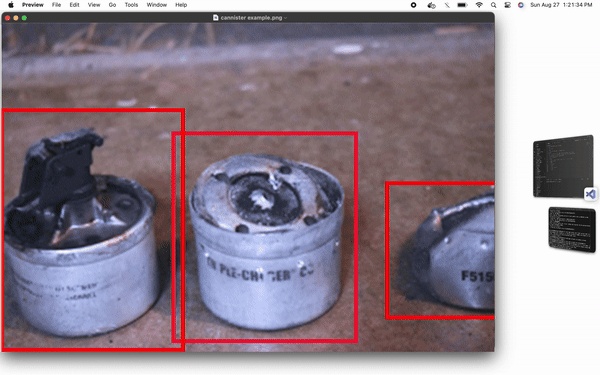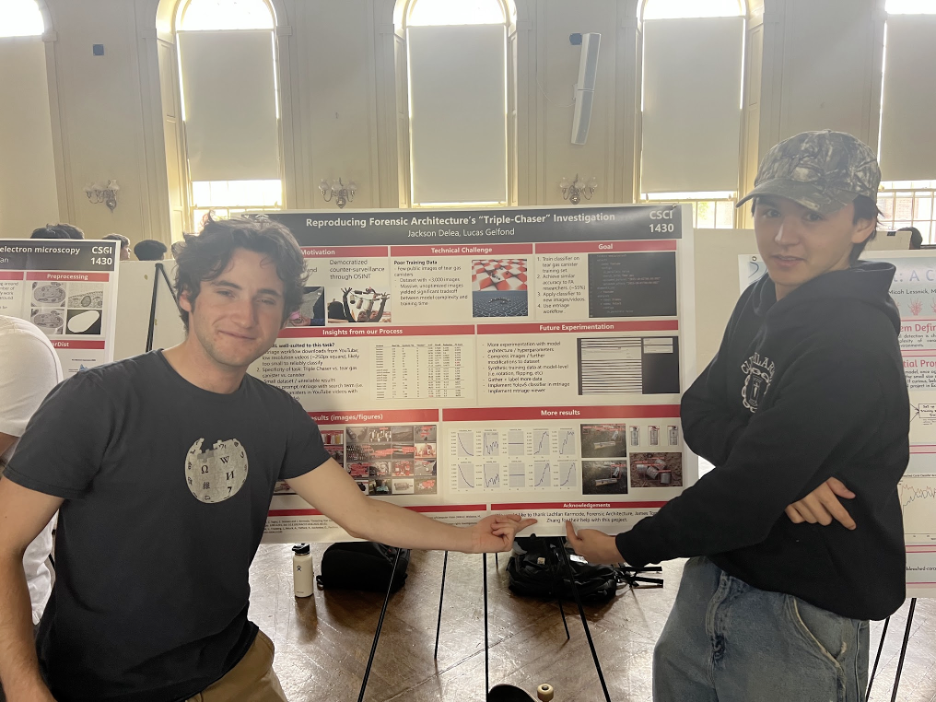

I first learned about Forensic Architecture through Lachlan Kermode, a grad student in Modern Culture in Media at Brown and one of the advisors for our ethics TA program. Forensic Architecture's work uses ‘open sources’—social media posts, satellite imagery, and other information broadly available—to do technically involved human rights investigations; their work has been used both in international courts of law and art exhibitions.
Their most famous work was 2019’s “Triple Chaser,” which they made for the Whitney Biennial. Some background is necessary here; many artists dropped out of this Biennial in protest of a Whitney board member who’d made their money manufacturing tear gas. Instead of pulling out of the exhibition, Forensic Architecture used pictures of the canisters to produce detailed 3D models, which they used to generate thousands of images, which could train a computer vision model to classify these tear gas canisters. FA’s work used this classifier on YouTube videos, to show more use of tear gas. After the exhibit, the board member resigned. Pretty effective!
These investigative techniques immediately caught my attention—I tore through a book (read my Goodreads review!) about a similar organization called Bellingcat, and immediately asked Lachlan if there was any way to get involved. In my computer vision class that spring, my partner Jackson and I reproduced the investigation with YoloV5, and Lachlan mentioned an exhibit Harvard’s Collection for Historical Scientific Instruments was putting on about surveillance.
I jumped at the idea. First, we made code contributions to better maintain their media analysis tool. We also made a video for the showcase about mtriage, the media analysis tool the group had built.

